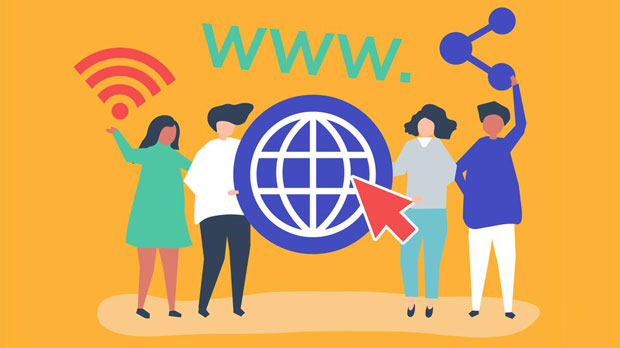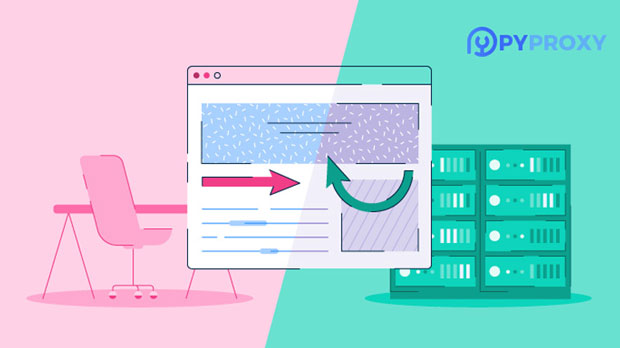Finding a trustworthy free proxy list resource platform can be a challenging task, especially with the abundance of options available on the internet. Many free proxy services promise anonymity and fast connections, but not all of them live up to their promises. Some might compromise your data, slow down your browsing, or even expose you to malicious activities. Therefore, it is important to evaluate various factors before selecting a free proxy list platform. In this article, we will explore the key criteria that can help you identify a reliable resource for free proxies, ensuring safe and effective browsing. 1. Security and Privacy: The Top PriorityWhen choosing a free proxy list platform, security and privacy should always be your primary concern. A good platform will ensure that the proxies provided are secure and do not expose your sensitive data to third parties. Many free proxy services track user activity, and their proxies might even record your personal information, posing potential privacy risks. To mitigate such risks, opt for platforms that have a clear privacy policy stating that they do not log or sell your data. Moreover, choose platforms that offer encrypted proxies, ensuring that your internet traffic remains private and protected from third-party surveillance.2. Proxy Types and Quality: Understanding What’s on OfferFree proxy lists often come in various types, such as HTTP, HTTPS, and SOCKS proxies. It is essential to understand the differences between them and choose one that fits your needs. HTTPS proxies are generally more secure than HTTP proxies, as they provide encrypted communication, making them less vulnerable to data theft or man-in-the-middle attacks. SOCKS proxies, on the other hand, tend to be faster and more versatile, supporting different types of traffic, including torrents and P2P connections. A reliable platform should offer a mix of these proxy types, ensuring that you have access to the most suitable options for your online activities.Furthermore, the quality of the proxies is another important factor to consider. Free proxies are often unreliable and may suffer from slow speeds or frequent downtime. Therefore, look for platforms that offer a high uptime rate (at least 95% or higher) and consistently fast connection speeds. The proxies should be tested regularly for reliability and performance to ensure that users experience minimal disruptions while browsing.3. Geolocation and IP Diversity: Access to Global ContentAnother key factor when selecting a free proxy list platform is the availability of proxies from various geographical locations. A good proxy list should offer a diverse range of IP addresses from different countries, allowing you to access region-specific content and bypass geo-restrictions. Whether you need to access US-based streaming services or view content from other regions, having proxies from different countries can enhance your browsing experience. Geolocation diversity is also essential for maintaining anonymity. By using proxies from different locations, you can avoid being traced back to a single IP address, further protecting your privacy. The platform you choose should ideally provide proxies from several continents, including North America, Europe, Asia, and Oceania, to offer comprehensive access to global content.4. Speed and Performance: Ensuring Fast BrowsingWhile free proxies are generally slower than paid options, a good proxy list platform should still provide reasonably fast speeds. Slow proxies can lead to frustrating browsing experiences, especially when streaming videos, downloading files, or engaging in real-time activities. Therefore, look for a platform that regularly tests and updates its proxy list to ensure optimal performance.Some free proxy platforms offer filters to help you find the fastest proxies. These filters may allow you to sort proxies based on speed, location, and type. Prioritize platforms that offer high-speed proxies, especially if you require them for activities such as online gaming or accessing high-bandwidth services like video streaming.5. User Reviews and Community Feedback: A Valuable ResourceBefore trusting a free proxy list platform, it's a good idea to check user reviews and community feedback. Genuine user experiences can give you valuable insight into the platform's reliability and performance. Platforms that receive consistently positive reviews and have a strong community following are more likely to be trustworthy.In addition, community-driven platforms may allow users to report faulty proxies, helping to maintain the quality and reliability of the proxy list. Look for platforms that provide a space for users to share their experiences and exchange tips. This community support can be extremely helpful when choosing the best proxies for your needs.6. Avoiding Malicious Proxies: Stay Safe from MalwareOne of the most significant risks when using free proxies is the potential for malware or other harmful software. Malicious proxies can infect your device with viruses, ransomware, or spyware, putting your data and privacy at serious risk. To avoid this, select platforms that perform regular security checks on their proxies. Platforms that clearly state that they monitor proxies for malware and other threats are preferable.It is also advisable to avoid using proxies that are openly listed on questionable forums or obscure websites. These proxies are more likely to be unreliable and pose security risks. Always prioritize platforms that have a transparent process for listing and maintaining proxies.7. Support and Customer Service: Assistance When NeededAlthough free proxy list platforms may not offer the same level of customer support as paid services, it is still important to choose one that provides some form of assistance. Look for platforms with a dedicated support team or an active community forum where you can ask questions and seek help if needed.Good customer support can be especially useful if you encounter issues with the proxies or need assistance in troubleshooting. Platforms that offer FAQs, tutorials, or detailed documentation are also more likely to be reliable and user-friendly.Conclusion: Making an Informed ChoiceSelecting a reliable free proxy list platform requires careful consideration of several factors, including security, proxy quality, geolocation diversity, speed, and user feedback. By keeping these criteria in mind, you can ensure that the platform you choose meets your needs while also protecting your privacy and data. Remember, free proxies can come with limitations, but with the right platform, you can still enjoy a secure and effective browsing experience. Always prioritize reliability and safety to make the most out of your free proxy list resource.
Aug 01, 2025



































































